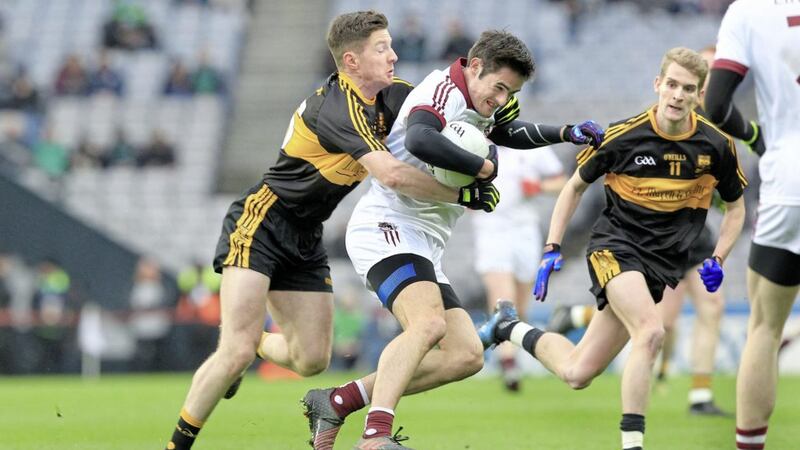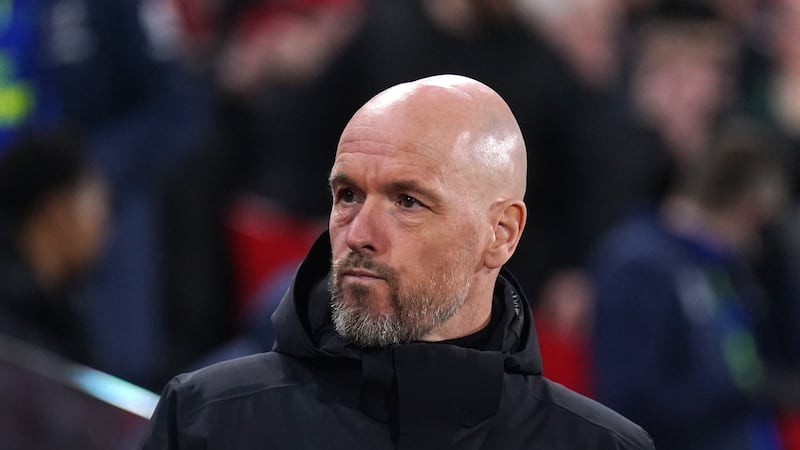IN Friday’s All-Ireland club football final, Chrissy McKaigue touched the ball 28 times in open play.
On 11 of those 28 occasions, he was fouled.
He was given a free on four occasions, while referee Maurice Deegan played an advantage a further five times.
On the other two, the Laois whistler didn’t feel the need to signal an advantage as Slaughtneil kept possession and had moved the ball clear of contact.
Eleven fouls from a clear and obvious ploy, but not a single yellow card.
As Tomás Ó Sé famously advised, they hammered the hammer.
The real issue is that Maurice Deegan’s hands were tied. As Dr Crokes rotated the person fouling McKaigue, it left the Laois whistler with no method of punishment available beyond a free kick.
A referee in Gaelic football has an awful lot to manage now but even still it’s hard to fathom that neither Deegan nor some of his team of officials picked up on a deliberate Crokes ploy to stop McKaigue from playing.
If they didn’t, they were the only people in Croke Park.
As he showed so brilliantly against St Vincent’s, he is the man that makes Mickey Moran’s operation tick.
From his organisation of the defence to his timing and quality of the attacking run, the Derry defender shone brightest of all on his club’s run to a second All-Ireland club final.
Initially Crokes put Gavin O’Shea out to tag him but McKaigue’s move across to pick up Johnny Buckley meant that the workload became shared by the black and amber jerseys.
But you could see clearly how aware they were of his threat. Crokes were happy, for a long time, to let others carry the ball as long as it wasn’t McKaigue.
That was until they discovered how big a threat Brendan Rogers could be when he decided to carry, and they took to then fouling him as well.
All in, Dr Crokes committed 28 fouls to Slaughtneil’s 14 in the All-Ireland final.
Jordan Kiely’s booking for leading into Patsy Bradley’s head with his knee in the Slaughtneil goalmouth was the only occasion where they were punished by a yellow card for an actual foul.
Their other two bookings, for John Payne (can someone please explain to me how TG4 gave him man of the match?) and Fionn Fitzgerald, were both as a result of off-the-ball wrestling matches that led to Cormac O’Doherty and Shane McGuigan picking up bookings as well.
Asked had his side deliberately targeted McKaigue and set out to foul him every time he touched the ball, Dr Crokes selector Harry O’Neill wasn’t exactly hiding their intentions.
"Yeah, obviously because if you let Chrissy McKaigue get up and running, he's very hard to stop," he reasoned.
"We saw what he did against St Vincent's, he was a powerhouse there.
"Most managers, when they go into any big game like that, you try and target the biggest players - I'm saying target in a positive way in that you go to try and make sure those guys aren't having an influence on the game and he was one of the guys we would have earmarked."
It’s not Dr Crokes’ fault that the rules allow it. Who wouldn’t do the same?
The better players are routinely targeted, and not just in Gaelic football.
You only need to look at Manchester United’s attempts to not-so-subtly kick Eden Hazard out of their FA Cup clash last Monday night.
Ander Herrera’s second booking was controversial in the sense that his foul was fairly innocuous, and like most United fans I initially railed against Michael Oliver’s decision.
And then I discovered that there’s actually a rule in soccer that allows a referee to punish a team for repeated offences against a player, even if they’re not committed by the same person.
It’s an idea that Gaelic football should strongly consider adopting at this stage.
People may not like the running element of attacking play in the game now but that’s the way it is. And as the sport has undergone this reformation over the last 20 years, the rules haven’t been adapted to suit.
When there was a widespread campaign for the introduction of a black card to Gaelic football, it was carried through on a wave of emotional blackmail.
The only thing missing from the video shown to Congress in support of it was a crying child and a number you could text to donate £3 a month to the ‘let Conor McManus score his goal fund’.
It was, as I’ve said repeatedly in this column, never required.
The cynicism of pulling a man to ground in the dying minutes as you protect a lead is no more frustrating to watch than the lazy pull of the jersey by a half-forward ploughing back into position ten minutes into the game.
No better example of it than Kerry and Dublin on Saturday evening. The Kingdom were set up to prevent Dublin’s half-back line from starting quick counter-attacks and committed a litany of those small fouls.
In my years of watching, I’ve rarely if ever seen a successful tackle made in Gaelic football by a man who is coming from behind the man he’s tackling.
Just look at the photograph at the top of this page. Where is the intent to win the ball by Kieran O’Leary?
If anyone can find me an example on YouTube of one, please send it on. And if you do, I’ll send you back 2,000 examples of a tackle from behind resulting in a foul.
Until the yellow card is utilised properly and a rule is brought in to stop individual players being targeted and effectively being taken out of a game, Gaelic football will never fulfil its potential as a spectacle.









